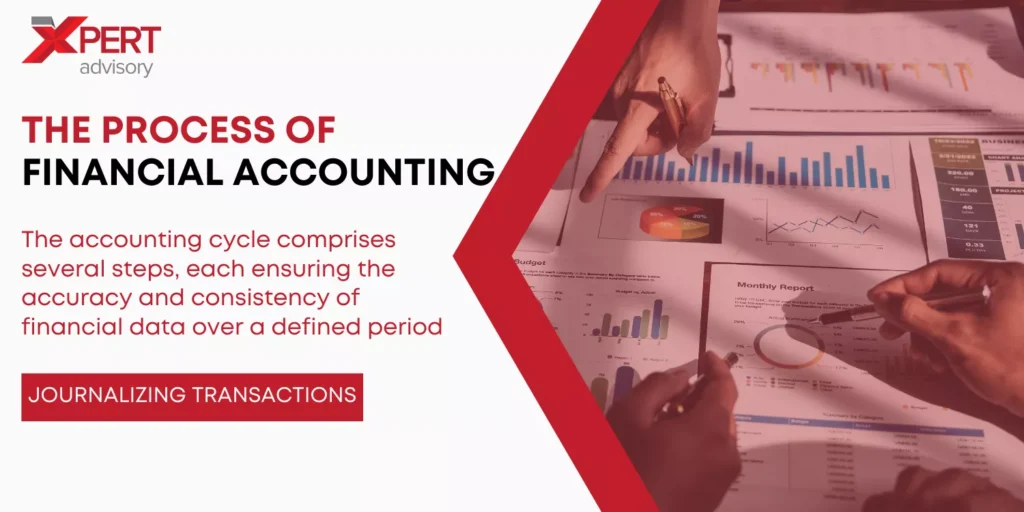Financial accounting is deemed a crucial aspect in any business endeavor. Financial accounting provides a crystal-clear and detailed look at the organization or firm’s monetary transactions as well as its overall financial condition. It facilitates businesses to accumulate accurate financial statements vital for efficient decision-making & tactical business planning.
By sticking to the standardized accounting rules, regulations and principles, financial accounting guarantees both transparency as well as consistency in the realms of reporting and fostering trusts amongst authoritative bodies, creditors, and investors.
For any business to become successful and remain competitive, it is very important for them to completely understand as well as manage their financial accounting procedures. In this article, we will dive deeply into the complexities which financial accounting holds, right from the actual definition of financial accounting and its motive, to the primary principles which guide it along with the crucial role it plays in crafting the success of any business. Let us begin and read the answer to the question of “What is financial accounting?” in detail:
What is Financial Accounting: The Primary Purpose of Financial Accounting

Financial accounting refers to a specialized domain which falls within the massive field that accounting is. It emphasizes on the procedure of recording, condensing, as well as presenting an array of transactions which stem from different business activities in a systematic way over a stipulated period. Financial accounting is a specific practice intended to provide finance-related information to business owners and other users, which will be discussed further in the article.
In simpler words, financial accounting is the process which offers a highly-structured approach in terms of the creation of fiscal records and statements. Financial accounting focuses on decyphering the financial health of a company based on financial data. Understanding financial accounting meaning is very important, especially for those who wish to know more about following a company or business’ fiscal transactions, i.e., keeping track of their financial records.
Created financial statements, including the likes of balance sheet, statements of income, statements of cash flows, etc., act and function as a company or organization’s operation performance within a specific period. One of the main aims of financial accounting is to give stakeholders precise and transparent information about a company’s financial status as well as its performance.
This set of information is highly important for numerous parties, especially creditors and investors, since they rely on such details to make important decisions. Besides aiding in the evaluation of a company’s past as well as current financial health and stability, financial accounting offers insights which can truly help in shaping crucial business tactics and assist in allocating resources.
Main Principles of Financial Accounting | How Financial Accounting Works
Financial accounting closely follows a pre-established set of principles, all of which together ensure consistency as well as compatibility across numerous different organizations. These principles and postulates dictate the procedure of financial record-storing and reporting.
These generally accepted accounting principles enclose within themselves the recognition of the five primary classifications of finance-related data, which are:
- Revenues
- Expenses
- Assets
- Liabilities
- Equity
The primary principles or postulates of financial accounting are enclosed within these two primary methods:
- The Accrual Method: This method holds the record of transactions as and when they occur, i.e., it is not dependent upon the cash flow.
- The Cash Method: This method holds the record of transactions when cash alters or changes hands.
Each of the aforementioned methods offer a foolproof framework to businesses using which they can, in a systematic way, capture as well as reflect on their financial activities within their financial statements.
What Role do Financial Accountants Play?

Financial accountants are trained professionals who shoulder the responsibility of preparing as well as maintaining a company or organization’s official financial records, reports, etc. Financial accountants hold numerous distinctive designations, including CPA, CA, and many similar ones.
The role of financial accountants is very important in making sure that any company’s official financial records are precise, fully complete, and most important, in compliance with the established regulatory requirements.
They hold the responsibility of precisely crafting and documenting financial transactions, Year-over-Year record keeping, making financial statements, and lastly, protecting the company or organization’s financial integrity.
Their work related to financial accounting allows businesses to actively track, monitor, and analyze the performance aspect over time, which in turn helps in making major strategic decisions and maximizing transparency in terms of financial reporting.
Users of Financial Accounting Information | Importance of Financial Accounting
Now the question arises, “Who uses financial accounting” or rather “who uses the information acquired by financial accounting?”. Well, there are diverse users of the information gained by financial accounting. Each of them have different areas of interest in a company or firm’s official financial affairs.
For starters, investors go through the company’s financial health by examining the records and statements thoroughly. This information acquired using financial accounting helps them acquire an idea about its performance and to form expectations and plans about future prospects. Auditors examine the financial statements to cross-check their preciseness and to make sure that they are exempt from any sort of errors or misstatements.
Creditors, lenders, and other financial institutions use financial information, i.e., the acquired information related to financial records to assess the financial health and analyze a firm’s solvency, liquidity, as well as their creditworthiness. All of these are deemed major factors in the lending sector.
In some cases, suppliers also depend on the said information to determine an organization’s credit history as well as their profitability before proceeding with the credit extension process. Financial accounting statistics and information is also highly valuable for internal stakeholders, including the company’s management, primarily because they are dependent upon the acquired data to make budgets, track efficiency, and devise both short and long-term plans. Hence, it would be safe to say that financial accounting plays a major role in multiple ways.
Overview of Financial Statements
Financial statements can be defined as the primary means or pathways through which any business is able to communicate about its financial information to external or third-party entities. They encompass a wide range of financial accounting reports, each of which provides highly distinct perspectives related to the company’s financial condition and operational triumphs & achievements. Here is a detailed look at the different types of financial accounting statements:
Balance Sheet – A Closer Look
A balance sheet is a financial document that offers a snapshot or peek at an organization’s financial standing at any specific moment. It mentions in detail the company’s official resources, obligations, and the net worth which is attributable to every shareholder, all while abiding by the fundamental accounting equation.
This document is very important for those responsible for analyzing the business organization’s financial stability and capacity. Resources added in the balance sheet are arranged in a specific manner, i.e., they are sorted from the most liquid to the least liquid, starting with the current assets, including cash, accounts receivable, etc. These come before long-term investments as well as physical assets such as property, equipment, etc. Financial obligations are listed or categorized into current, payable within an year, and lastly, long-term liabilities.
The net worth which is attributable to shareholders is representative of the assets’ residual value after all obligations have been settled. It includes all retained earnings, which are representative of the profits which can be put in or re-invested again into the business or distributed in the form of dividends.
What is an Income Statement?
The income statement is another financial document which reveals a company’s financial performance during a specific accounting period. It lists revenue streams and expenditures in detail, and shed light on the effectiveness of operations.
Moreover, it also identifies areas where improvements can be made. Coming to the categorization, revenues are listed or categorized in two ways – those acquired from main business activities, and those acquired from secondary sources (interest, debt, etc.). Income statement is vital for assessing a company’s power in terms of earning and benchmarking the acquired results against competitors.
Understanding What Cash Flow Statements Are
Cash flow statements or statements of cash flows are financial documents which offer insight into cash transactions which occur within the organization. Cash flow statements complement accrual-based records.
They itemize inflows and outflows of cash during a specific period, which are then organized into different categories based on activities, such as operational, investment, and finance-related activities.
The statement of cash flows is very crucial for assessing an organization’s capacity to meet its financial obligations and acquire sustainability in the operations area. Moreover, it also showcases the correlation between the movements of cash and the net earnings.
Deciphering Statement of Retained Earnings
The statement of retained earnings, which is also referred to as the statement of changes in equity, is a financial document which lists the variations in the equity of owners throughout a specific accounting cycle. It includes the cycle’s overall comprehensive income, transactions of owners like dividends, buybacks of shares, and the results of any changes in policies related to accounting or rectification of mistakes and errors.
The statement of retained earnings is very important for shareholders as well as potential investors to understand the overall impact of the decisions made by the company and the tactical moves on their respective ownership interest.
What do Notes & Supplementary Information Offer?
Notes and supplementary information provide more clarity to the data available within the financial statements. This specific section related to accounting may consist of detailed analysis related to multiple streams of revenue, explanations of different accounting policies, etc.
The details provided here ensure and promote transparency and aid stakeholders in the process of making smart & well-informed decisions which are based on an overall view of the organization’s fiscal health.
Popular Concepts and Conventions of Accounting
Accounting Equation & the Double-Entry Technique or Accounting Method

Deemed a fundamental concept in the realm of financial accounting, the double-entry system of financial accounting ensures that every transaction gets recorded in two different accounts in order to keep the accounting equation’s equilibrium intact. The double-entry accounting methodology, which is very crucial to capitalism’s development, gained prominence in Europe during the Mercantilism era.
It consists of a debit record in one account and another corresponding credit entry in the other one, thereby ensuring that the final amount of debits is equal to the total number of credits, which is highly vital for financial statements’ integrity.
Let us consider an example – When an organization takes a loan, it marks an increase in terms of both assets as well as liabilities. Similarly, buying raw materials using cash will enhance inventory and decrease cash reserves.
This specific system offers a detailed view of the fiscal status of the organization. Moreover, it also facilitates in detecting errors and discrepancies and aids in the creation of finance-related reports.
Accrual Accounting & the Matching Principle
Accrual accounting, with the help of the aforementioned double-entry system, stores the record of revenues and expenditure at the time they are earned or incurred. However, it is important to note that it is not always necessarily done when cash is received or sent out.
Abiding by the matching principle makes sure that all revenues as well as expenses are taken notice of and recognized in the specific period they relate to. This offers a more precise showcase or depiction of an organization’s fiscal performance.
As opposed to cash-based accounting, a method wherein transactions are recorded only when cash is exchanged, accrual accounting depicts the actual economic activities which have taken place in a specific period. This significantly enhances the representation of an organization’s operational results.
The Conservatism Principle & Materiality
Conservatism is a principle which dictates that all profits should only be reported when they are certain, and every potential loss should be recognised quickly. This ensures that fiscal reports depict actual conditions and do not appear overly optimistic.
On the other hand, Materiality concerns the importance of finance-related information to the decision-making of users. This concept of financial accounting requires the revelation of all important information that holds the potential to influence a knowledgeable user’s judgment, with the vitality of the financial data being subjective & dependent on the magnitude as well as nature of the transaction.
Consistency & Compatibility
Consistency necessitates business entities to use the same accounting methods or tactics continuously, which is crucial for acquiring reliable financial analysis & reporting. Compatibility on the other hand, facilitates the evaluation of finance-related data from multiple entities at once in a side-by-side manner.
This ensures that every stakeholder is able to trust the single-type or uniform application of accounting standards. Both of these principles are invaluable for assessing the credibility as well as utility of fiscal data, thereby aiding well-informed business judgements.
The Process of Financial Accounting

The cycle of accounting consists of multiple procedures, each of which ensures fiscal data’s consistency & preciseness over a specific period. As per the financial accounting definition, the period can vary, i.e., it could be on a monthly or annual basis, depending on the requirements of the business. Let us dive a little deeper into what the accounting process for finances is made up of:
Keeping Track of Transactions in Journals
The primary step in the elaborate accounting cycle is recognizing transactions and recording them. Every financial event which affects the company’s financial position must be carefully documented inside a journal. This type of dual recording aids in the developing a highly-detailed general ledger, statement of income, and statement of cash flow. All the said documents are vital for the upcoming steps of the accounting cycle.
Posting in Ledgers & Preparation of Trial Balance
After entries in the official journal have been made, every transaction must be posted within their respective accounts inside the general ledger. The general is deemed the “master” document, primarily because it summarizes all entries, i.e., transactions, and reflect the fiscal standing of the company.
At the accounting period’s conclusion, a trial balance is made, which offers a glance at each account’s unadjusted balance. This snapshot is mandatory for the verification of ledger accounts, i.e., whether the accounts before the adjustments are balanced out or not.
Adjustment of Entries & Correction of Errors
The next step in the cycle of financial accounting involves analyzing a specific worksheet to determine whether any necessary adjustments are required. Accrued revenues, prepaid expenditure, depreciation, etc., – there could be many reasons for adjustments.
Then, adjusting entries are listed in the journal for the purpose of correcting discrepancies. This step in the accounting cycle is vital for ensuring that all the financial statements, at the accounting period’s end, truly reflect the company’s actual fiscal position.
Preparation & Presentation of the Final Accounts
At the completion of the financial year, the final accounts are listed or organized in a specific manner. They offer a crystal-clear look at the company’s financial performance along with its position to the stakeholders. The preparation process of the final accounts includes the adjustment of the trial balance, preparation of the adjusted trial balance, and finally the creation of financial statements.
After the net profit or loss has been calculated and reported, it is included in the capital of the balance sheet on the side of liabilities. Then, the balance sheet is totalled, which reflects the solvency of the company. The conclusion of the elaborate accounting cycle happens when the books are finally closed.
This involves the process of summarizing the financial activities carried out during the period, and the preparation of the business for the upcoming cycle. The usage of accounting software can significantly reduce discrepancies, errors, help save time, and guarantee financial statements’ accuracy.
Automation not only streamlines the process properly, but also helps business entities to shut off their books completely. Moreover, it also helps them shift their focus towards analysis and away from the financial accounting practice of manual book-keeping.
The Importance of Getting Accounting Assistance from Experts

Even the smartest individuals sometimes mix-up tax different areas of basic accounting. Moreover, understanding the differences and distinctions between financial accounting and other forms of accounting such as tax accounting, managerial accounting, management accounting, etc., is also vital for both individuals as well as business entities, primarily due to their dynamic objectives and regulatory guidelines.
At Xpert Advisory, we have in-depth knowledge of all areas related to the massive world of accounting. Our wide range of accounting services can assist you in keeping precise and up-to-date accounting records of all your corporate transactions. Irrespective of your business’ size, accounting is crucial, since it helps you in terms of taking decisions, planning costs, and most importantly, measuring your economic performance. Therefore, if you are in need of any type of accounting assistance, get in touch with us to begin!
Conclusion
Financial accounting is crucial in multiple ways. For starters, it is component that crafts the business landscape. By turning raw finance-based data into detailed and easily-understandable fiscal statements, financial accounting facilitates stakeholders in skipping through the dense haze of everyday transactions and seeing the bigger fiscal picture.
The analysis as well as the insights that financial reports provide are invaluable assets that come in very handy when making decisions. They are very important in paving the way for tactical business planning, management of finances, and law & regulatory compliance. If you wish your business to benefit from financial accounting, get in touch with Xpert Advisory for the same.
Disclaimer:
This blog is intended for informational purposes only. The content is provided “as is” and we make no representations or warranties of any kind regarding its accuracy, completeness, or suitability. Any reliance on the information is at your own risk. We are not liable for any losses or damages arising from the use of this blog.
* – Fees and Costs Mentioned are for Reference Only.
